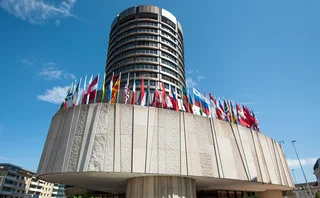
NAB gets regulator’s nod to resume risk modelling
National Australia Bank (NAB) has received approval from the Australian Prudential Regulation Authority (Apra) to resume use of its internal model for the calculation of the market risk component of risk-weighted assets, the bank said in a statement issued on December 13.
In the last three months of 2003, four traders in the bank had reportedly taken leveraged call options positions on the Australian and New Zealand dollars with the expectation that these currencies would depreciate against the US dollar. But instead of weakening, the currencies both appreciated sharply against the greenback, resulting in heavy losses. Taking advantage of loopholes and weaknesses in the bank's system, the traders also reportedly entered fictitious currency transactions into the books to cover their losses.
Apra also removed the regulatory requirement to maintain a capital target of 10%, effective immediately, the December statement said. However, this would have no impact on NAB’s capital planning for this financial year, which assumed a return to the internal model during the first half of its 2006/07 financial year, ending September 30 2006. The bank indicated in a profit announcement issued on December 1 that, had the internal model been applied at September 30, risk-weighted assets would have been reduced by about A$9.9 billion on a pro-forma basis.
NAB is Australia’s largest lender and the owner of two banks in Britain - the Yorkshire and the Clydesdale. Three traders in Melbourne and one in London received jail sentences of 15-30 months, in trials which concluded in mid-2006.
NAB announced a 10% increase in net profit to A$4.39 billion for the year ending September 30. “This result follows two and a half years of detailed planning, hard work and careful implementation,” John Stewart, chief executive officer, said in the results statement issued in November. “We have faced the issues that confronted [us] in 2004, and are fundamentally changing our culture and the way we run the business.”
Only users who have a paid subscription or are part of a corporate subscription are able to print or copy content.
To access these options, along with all other subscription benefits, please contact info@risk.net or view our subscription options here: http://subscriptions.risk.net/subscribe
You are currently unable to print this content. Please contact info@risk.net to find out more.
You are currently unable to copy this content. Please contact info@risk.net to find out more.
Copyright Infopro Digital Limited. All rights reserved.
You may share this content using our article tools. Printing this content is for the sole use of the Authorised User (named subscriber), as outlined in our terms and conditions - https://www.infopro-insight.com/terms-conditions/insight-subscriptions/
If you would like to purchase additional rights please email info@risk.net
Copyright Infopro Digital Limited. All rights reserved.
You may share this content using our article tools. Copying this content is for the sole use of the Authorised User (named subscriber), as outlined in our terms and conditions - https://www.infopro-insight.com/terms-conditions/insight-subscriptions/
If you would like to purchase additional rights please email info@risk.net
More on Regulation
FRTB start dates must align globally, says European Commission
Lawmaker could trigger delay to market risk rules in Europe if US implementation drags on
Fed green lights more capital relief trades
Five US banks authorised to issue repeat credit-linked notes backed by financial guarantees
Basel III endgame: why moving fast might prove better for banks
Republicans are pushing for reproposal, but a rapid finalisation may prove less far-reaching
Isda pushes to ‘decouple’ Simm calibration from model changes
Emir 3.0 prompts effort to separate risk-weight revisions from methodology updates
Basel war on window-dressing may smooth liquidity, at a price
Changes to G-Sib charge could curb year-end repo volatility, but also cut balance sheet capacity
One year on, regulators still want a cure for bank runs
Broad support for higher outflow assumptions on uninsured deposits, but that won’t save insolvent banks
Watchlist and adverse media monitoring solutions 2024: market update and vendor landscape
This Chartis report updates Watchlist monitoring solutions 2022 and focuses on solutions for sanctions (name and transaction) screening and monitoring adverse media and its related elements
Basel Committee reviewing design of liquidity ratios
Focus on LCR and NSFR after Silicon Valley Bank and Credit Suisse, but assumptions may not change
Most read
- Breaking out of the cells: banks’ long goodbye to spreadsheets
- Too soon to say good riddance to banks’ public enemy number one
- Industry calls for major rethink of Basel III rules







